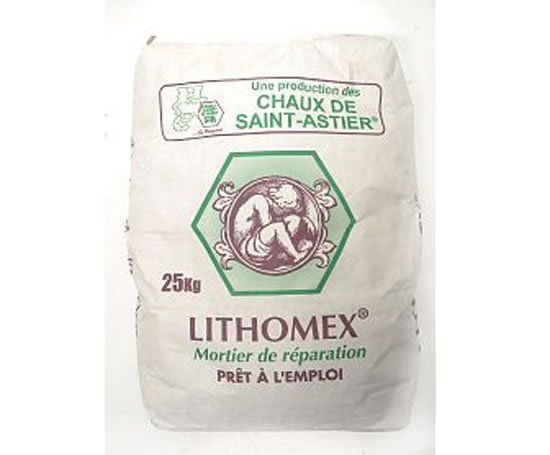
A photo of myself and my ever-faithful companion, Doris the Jack Russell.
I have spent the last two decades working in Oxfordshire as a lime mortar specialist. I also covered Northamptonshire, many parts of Buckinghamshire and also Wiltshire. I have worked hard to develope an in-depth working knowledge of building limes and heritage plasters and have brought this home to the North East - which is where I was born. Over recent years I've since completed projects in areas such as Coverdale, Farndale, Baldersdale and Teesside.
I can now confirm that nearly all stone built period properties in England were originally built using just earth and quicklime and then pointed with a simple mix of sand and quicklime.
Therefore, the only sensible option for these properties is a like for like quicklime mortar. The quicklime comes from Buxton in Derbyshire and I slake it on-site with a special blend of local sands which give it that very traditional distinctive creamy colour.
I also mainly use quicklime because of research highlighted by organisations such as Historic England and SPAB.
https://historicengland.org.uk/research/current/conservation-research/materials-and-techniques/
In short, when quicklime is used to make mortars for period properties it forms the most attractive, porous and flexible mortar. It's better than any natural hydraulic lime (NHL) or lime putty but it takes a lot more skill to mix, apply and finish.
When mixed with water or damp sand the quicklime starts to slake. The result of this exothermic reaction is that the mixture reaches boiling point and gives off steam.
Quicklime makes the toughest mortar and it's more than capable of withstanding the harshest of conditions which the most challenging areas of the north can throw at it. It will also outlast cement by many decades.
It's a simple science based around that fact that a good traditional lime pointing mortar over the top of earth mortar means that the whol property can flex with the seasonal movement which all period properties go through during the year. In direct contrast, cementitious mortars are inflexible (so they crack) and their use leads to moisture retention, damp and mold.

The above property is one I refurbished using hot mixed mortar in Bledington in the Cotwolds. The mullioned windows were also in need of sympathetic repair. A combination of specialist surface repair mortar and organic pigments and ochres made this possible.

Although the cottage is very old, the windows were even older because they were reclaimed when the property was originally built. It's possible that this stone could date back to the 1400s.

For more on earth/lime mortar (common mortar) and lime pointing, click on the above link.
A little about me: I regard myself as a heritage conservation mortar specialist. It was never a career move but was something which developed out of the work I did as a garden designer landscaper. Part of landscape building is walling and I used to build drystone walls. From there I went on to construct lime mortar built ones - known as wet stone walls. It was only a matter of time before someone asked me to repoint their house in lime and the result was that a lot more work followed.
I went on to refurbish the exterior of a converted barn and followed this with a few older houses before I moved onto my first grade two listed building. Having spent years honing my skills with stone and brick I decided to specialise in repointing with lime and after much research eventually went over to using quicklime and hot mixed mortar as it has the highest free lime content and the lowest compressive strength. It means it's much kinder to natural stone and aged brickwork and offers the best and most authentic finish.
Below: a before picture of inappropriate workmanship with cement and rotten quoins.

After: one often discovers that when working on period properties there is a host of other issues which accompany the repointing such as rotten or damaged quoins, cills and lintels. In this case a blend of my own stone repair mortar ensured this property's longevity for many more years.

Gable end repointed using quicklime mortar.
You can see the remains of aged lime wash which is still sticking to the bricks.

I like to think that my tools and equipment are top quality and I achieve an outstanding finish by increasing the amount of time spent on every aspect of the work including the most important final brushing. I never rush my work; I never cut corners.
An example of this is the photo below which is of personally specified blacksmith forged stone axes.

As an experienced and well travelled craftsman I bear first-hand witness to the fact that most period properties have suffered the damaging effects of unqualified and inexperienced workmanship coupled to the use of inappropriate materials. I see it all the time. The lure of cheap work is not without its consequences and the built environment has, and is, taking a hammering. Please, please please: The time for this to end is now. Have it done right and do your property, yourselves and future generations a favour.
A little history: The ways of preparing mortar were originally passed down from father to son, or master to apprentice, hundreds of years ago. Unfortunately these recipes were misinterpreted during the 80s lime revival. It now means that the current approach to NHL and lime putty is historically incorrect in relation to the way things were done hundred of years ago.
This realisation occurred after old mortars were deconstructed where it was revealed that most were made from quicklime. We now know that the old mortars had a far higher lime content than we ever imagined. The fact is, quicklime expands in volume when water is added making sure that the amount of lime in a mortar mix is increased - if kibbled lime is used then the volume doubles. What this means is that since the lime revival of the 1980s not enough lime has been used in lime mortar mixes.
Through many years of practise, in combination with the study of academic research, I can at last bring true historic artisan craftsmanship to period stone and brick built properties using the same high free lime content mortar from yesteryear which I mix to my own secret recipes.
This is made in-situ and the result is slaked lime the same way it was prepared thousands of years ago.
I work with my hands, my mind and my heart and have learned over the years that the best quality materials are the only way forward.
I have two decades of experience of dealing with grade two listed buildings and other ancient and historic brick and stone properties.

My focus is primarily on exclusively built properties in prime locations where I can provide quality to owners who are looking for superior workmanship. My customers have usually concluded that to do a good job sympathetically takes time and are unwilling to settle for anything other than the absolute best.
Choosing someone who fails to understand the mechanics and science of older properties can have disastrous results as specialist skills and materials are required on historic buildings. These resist water penetration whilst remaining porous and flexible. Moisture is wicked away from buildings ensuring they remain weatherproof, watertight, windproof and dry.
I also work with natural cement ((opus caementicium) which, once combined with lime hydrate becomes ideal for repointing, plastering and stucco work.

Natural cement was patented back in 1796 by the Rev. James Barker. It's made to the original recipe and has had nothing added and nothing taken away. It's vapour open in nature and is simply crushed, kilned and air slaked gault stone. It's uncomplicated, breathable, flexible, natural hydraulic cement which is desirable for its long term durability. However, it is much softer than Ordinary Portland Cement and its porous nature means it is ideally suited to heritage property as its qualities are the same as NHL. Its strength can be increased or decreased depending on the nature of the work and the environment.
I always try and preserve the external fabric of a building and somtimes use specialist products such as Lithomex.

It's a favourite as it allows for complex sensitive repairs to intricate brick and stonework.
I also do lime plastering but these days tend to focus more on insulating lime plaster. It's exactly the same as traditional haired lime plaster but some of the sand is swapped out for materials such as hemp, perlite and/or pumic. It doesn't have to be expensive and the thermal additions enable thick layers of plaster to be applied without the need for PIR board such as Celotex, Kingspan and insulating plasterboard.
Below: ground pummice for insulating plaster.

Perlite for insulating plaster.

My repertoire of sympathetic products also contains crushed chalk and hemp shiv which is used where insulating lime plaster is required.


I also use pozzalana when necessary i.e. if conditions dictate or if a stronger compressive strength is required due to possible damage from severe weather or cracking.





For high end work I include the use of marble dust in my plasters. I also use lime hydrate as academic papers now reveal that its heritage credentials are much more than were considered a few decades ago.


If you wish to give your property the finest treatment in order to keep it optimally maintained then please call for a free no obligation written quotation.
Whilst I work for you, you will have the benefit of my knowledge of period properties which earned me a college lectureship in the further education sector.
I originate from the north of England and lived in the north east until my early twenties. I'm an out-door man and most happy in isolated rural environments where craggy fell-sides drop down to rivers and streams which meander along glacial valley floors. I was schooled in the county of North Riding and have an Honours degree in psychology from the University of Reading. In addition I also have a PGCE from the Westminster Institute of Education of Oxford Brookes University. This has enabled me to work in the further education sector where I've lectured mainly in psychology. I also have professional qualifications in horticulture, landscape and design and I've worked in the City of Oxford as an English tutor.
I have applied my scientific background to the study and understanding of the mechanics of traditional building and restoration techniques and now specialise in heritage brick and stone repointing and repair as well as traditional lime plaster.
I have worked to a sufficiently high standard to enable me to be considered for work on National Trust properties. My preference, though, is for privately owned stone or antique brick properties to which I can employ my skills as an artisan craftsman working sympathetically to a high standard.
I'm a straight talking and direct Yorkshireman from whom you can expect honesty and integrity.
Please note: the contents of this website are copyright and are owned by Michael James. Reproduction without permission is an infringement of copyright law.
Lime mortar repointing Darlington, County Durham, Richmond on Swale, Yorkshire Dales, North Yorkshire Moors, Leyburn, Hurworth on Tees, Hornby, Northallerton, Stockton, Great Smeaton, North Cowton, Great Ayton, Hutton Rudby, Bedale, Staindrop, Barnard Castle, Reeth, Melsonby, Yarm, Sedgefield, Brompton on Swale, Egglescliffe, Heighington Village, Scorton, Middlesbrough, Teeside, Middleton in Teesdale.
Below: the feet of a man who's "in THE LIME".

